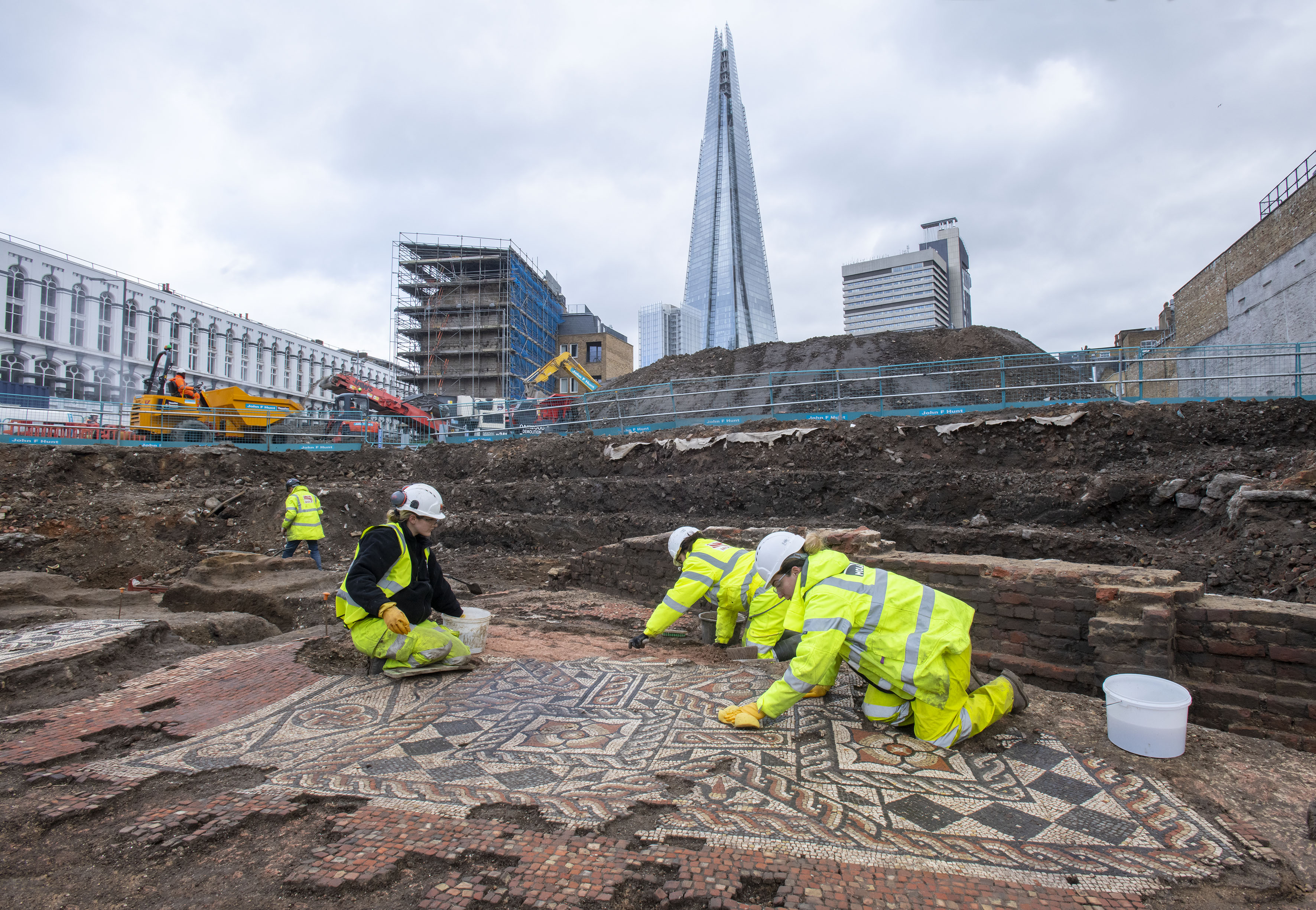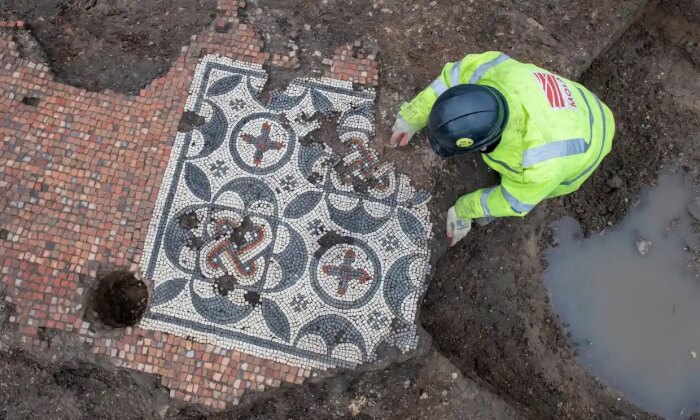Biggest Roman Mosaic Discovered In London For 5 Decades
Scientists have discovered the largest expanse of Roman mosaic discovered in London for 50 years at a site thought to have been a venue for high-ranking authorities to lounge in while being served food and drink.
Antonietta Lerz from the Museum of London Archaeology (Mola), said that the mosaic’s flowers and geometric pattern, dating back to the late 2nd century to the early 3rd century, were an astonishing and unique discovery.
The mosaic was found a month ago at a building location next to the London Bridge. It is 8 m long and will be raised later this year for preservation, as scientists are expecting it to be publicly exhibited.
David Neal, Roman mosaic expert, believed the larger panel was designed by a team of mosaicists known as the Acanthus group that developed their own unique style. The smaller panel is identical to one excavated in Trier, Germany, indicating London artisans travelled overseas.
The triclinium was possibly part of a Roman mansio, effectively an upmarket motel offering accommodation, dining and stabling to state officials and couriers travelling to and from Londinium across the river. The building’s footprint is still being revealed, but it seems to have been a bigger structure surrounding a central courtyard.
A decorate bronze brooch, a bone hairpin and a sewing needle were among the items retrieved. Lerz said that “These finds are associated with high-status women who were following the latest fashions and the latest hairstyles.” It was “the heyday of Roman London”, she added. “The buildings on this site were of very high status. The people living here were living the good life.”
The site is being redeveloped as The Liberty of Southwark, a complex of offices, homes and shops that is a joint-venture by U+I and Transport for London (TfL).
Antonietta Lerz from the Museum of London Archaeology (Mola), said that the mosaic’s flowers and geometric pattern, dating back to the late 2nd century to the early 3rd century, were an astonishing and unique discovery.
The mosaic was found a month ago at a building location next to the London Bridge. It is 8 m long and will be raised later this year for preservation, as scientists are expecting it to be publicly exhibited.
 Source: MOLA
Source: MOLA
David Neal, Roman mosaic expert, believed the larger panel was designed by a team of mosaicists known as the Acanthus group that developed their own unique style. The smaller panel is identical to one excavated in Trier, Germany, indicating London artisans travelled overseas.
 Source: MOLA
Source: MOLA
The triclinium was possibly part of a Roman mansio, effectively an upmarket motel offering accommodation, dining and stabling to state officials and couriers travelling to and from Londinium across the river. The building’s footprint is still being revealed, but it seems to have been a bigger structure surrounding a central courtyard.
 Source: MOLA
Source: MOLA
A decorate bronze brooch, a bone hairpin and a sewing needle were among the items retrieved. Lerz said that “These finds are associated with high-status women who were following the latest fashions and the latest hairstyles.” It was “the heyday of Roman London”, she added. “The buildings on this site were of very high status. The people living here were living the good life.”
The site is being redeveloped as The Liberty of Southwark, a complex of offices, homes and shops that is a joint-venture by U+I and Transport for London (TfL).
Share this article
Advertisement